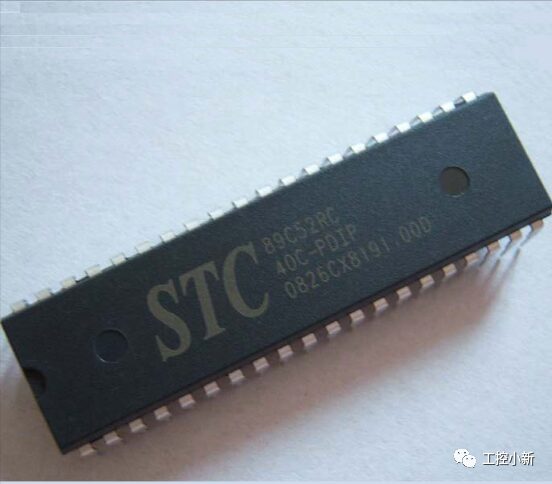Understanding the characteristics, structure, and application fields of the 51 microcontroller. Introduction: The 51 microcontroller is a microcomputer widely used in electronic systems, integrating multiple functional components such as CPU, RAM, ROM, timers, interrupt systems, and communication interfaces, capable of information collection, processing, and control of hardware devices. This article will introduce the development history, internal structure, and external pins of the 51 microcontroller, as well as its application cases in various fields.
A microcontroller, or single-chip microcomputer, is formed by integrating a microprocessor, memory, and I/O interface circuits on a single integrated circuit chip. Intel launched the MCS-51 series microcontroller, which integrates an 8-bit CPU, 4K bytes of ROM, 128 bytes of RAM, 4 8-bit parallel ports, and 1 full-duplex serial port, along with 2 16-bit timer/counters. It has an addressing range of 64K and features a powerful control Boolean processor, making it one of the most advanced microcontrollers of its time, characterized by low power consumption, high performance, and high reliability, widely used in home appliances, automobiles, industrial measurement and control, and communication equipment.

The 51 microcontroller consists of the following main components:
-
CPU: Central Processing Unit, responsible for executing program instructions, performing data calculations, and logical judgments.
-
RAM: Random Access Memory, used to store temporary data and variables during program execution.
-
ROM: Read-Only Memory, used to store program code and fixed data.
-
SFR: Special Function Register, used to control and configure the various functional modules of the microcontroller.
-
I/O Ports: Input/Output ports, used for data exchange with external devices.
-
Timer/Counter: Used to generate timing or counting signals for time control or event counting.
-
Interrupt System: Used to respond to external or internal exception events, allowing program jumps or pauses.
-
Communication Interface: Used for serial or parallel data communication, such as UART, SPI, I2C, etc.
The 51 microcontroller has 40 pins, of which 32 are I/O ports (P0~P3), divided into four groups of eight bits each. These I/O ports can be used as general input or output, or as special functions such as input or output for timers/counters, sending or receiving for serial ports, interrupt requests, or interrupt responses. Additionally, there are 8 dedicated pins, which are:
-
VCC (Pin 40) and VSS (Pin 20): Power pins, connected to positive and negative power supplies.
-
XTAL1 (Pin 19) and XTAL2 (Pin 18): Clock pins, used to connect external quartz crystals and oscillation capacitors to generate system clock signals.
-
RST (Pin 9): Reset pin, used to initialize the state of the microcontroller, allowing the program to execute from the beginning.
-
PSEN (Pin 29): Program Store Enable output control pin, used to read external program memory (if available).
-
ALE/PROG (Pin 30): Address Latch Enable pin/Programming Pulse input pin, used to latch the low 8 bits of address or input programming pulses (if required).
-
EA (Pin 31): External Memory Access control pin, used to select internal or external program memory.
The 51 microcontroller has extensive applications in various fields, such as:
-
In home appliances, the 51 microcontroller can achieve remote control, temperature adjustment, and timed switching for devices like TVs, air conditioners, and refrigerators.
-
In automobiles, the 51 microcontroller can monitor and control systems such as engines, brakes, steering, and air purification, enhancing vehicle performance and safety.
-
In industrial measurement and control, the 51 microcontroller can collect and process physical quantities such as temperature, pressure, flow, and liquid level, as well as control devices like valves, pumps, and motors, improving industrial production efficiency and quality.
-
In communication devices, the 51 microcontroller can perform signal encoding and decoding, modulation and demodulation, and data transmission for devices like telephones, faxes, and radios, enhancing communication speed and stability.
The 51 microcontroller is a powerful microcontroller that integrates multiple functional components and is capable of information collection, processing, and control of hardware devices. The 51 microcontroller comes in various models and packages, each with its own internal structure and external pin characteristics. It has extensive applications in various fields and is an indispensable component in electronic system design.